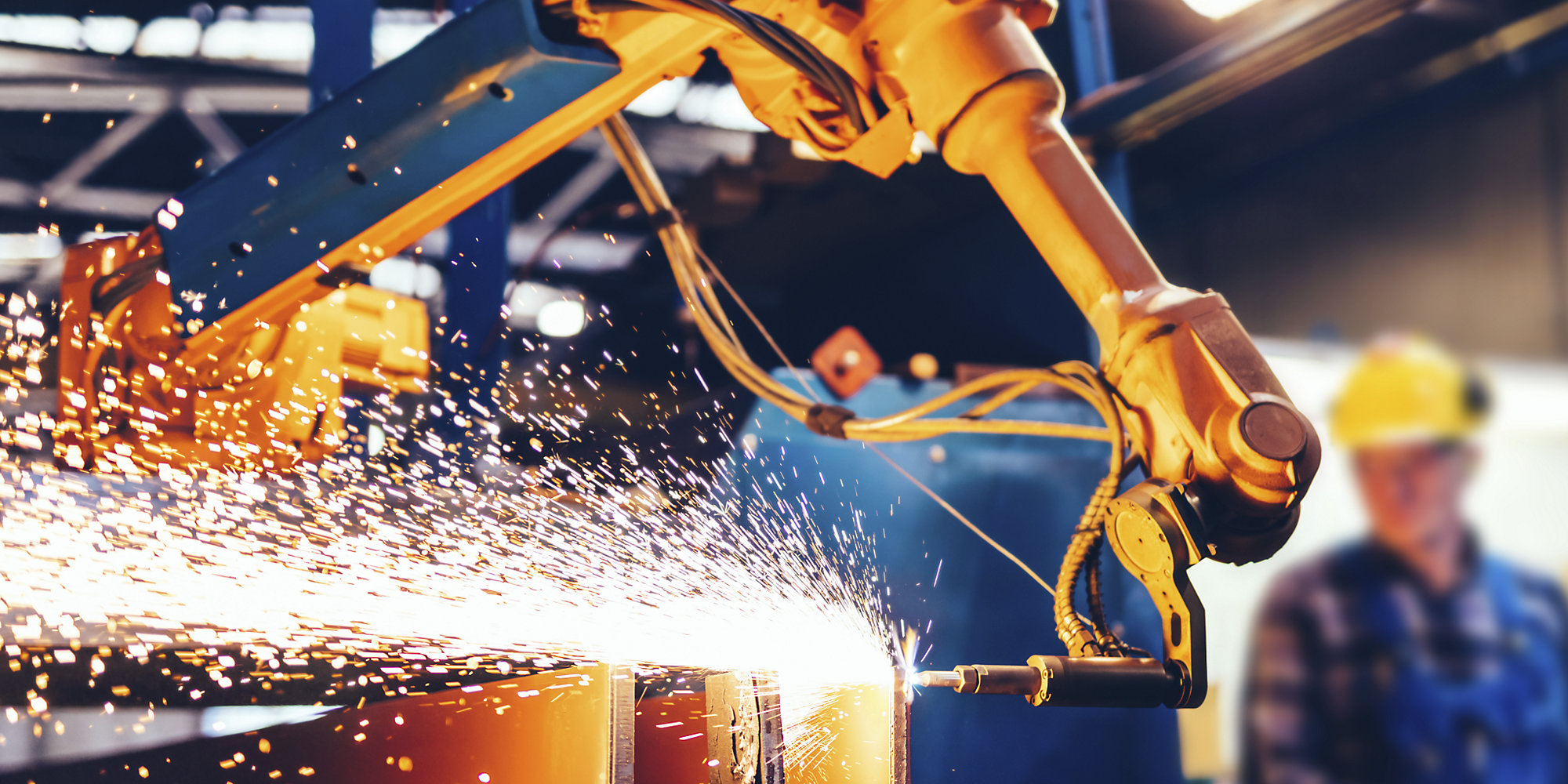
How robots are transforming physical labour
This is increasingly becoming possible in many companies, where machines are being used to carry out tasks that put excessive strain on the human body.
Find out more about how robots are set to change the face of physical labour both now and in the future.
The different ways in which humans and machines can work together
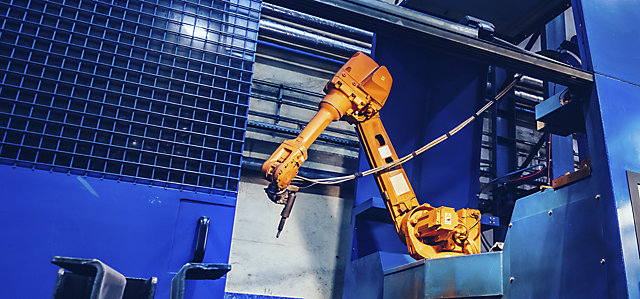
1. Coexistence
Humans and robots work independently of one another in neighbouring areas, without a barrier between them being necessary for safety reasons.
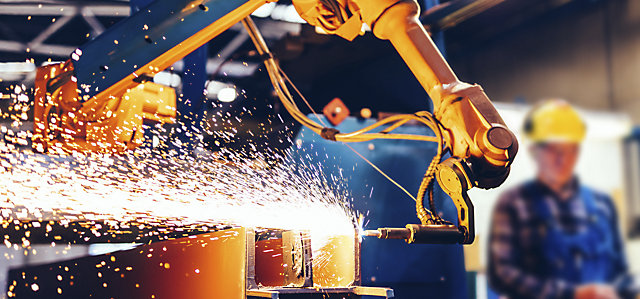
2. Cooperation
People and robots carry out different tasks within the same process. They work in the same room, without interacting with each other directly. For example, an employee will work on a component. Once they have completed their task, a robot will transport the component to the next stage of the process.
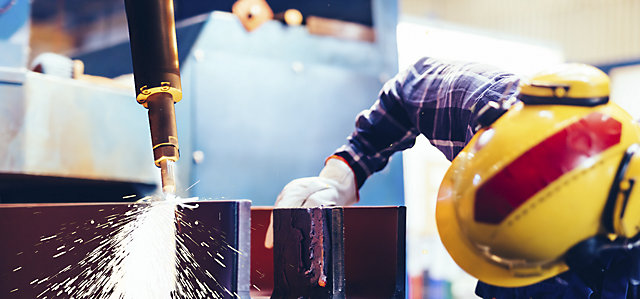
3. Collaboration
People and robots not only work in the same room, they actually “work together”. For example, they work at the same assembly station carrying out different tasks on a component. Cameras and sensors prevent accidents from occurring.
Cobots – collaboration is the name of the game
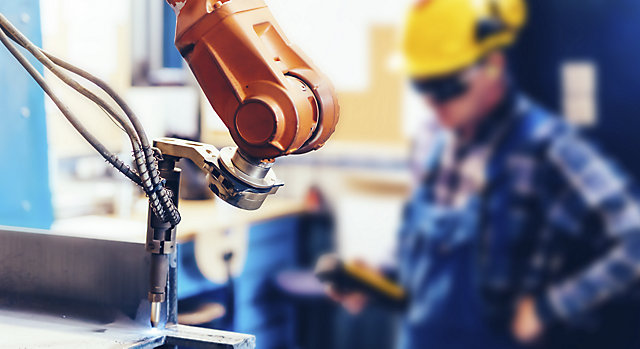
Robots which involve humans and machines working together are known as “cobots”.
Of course, there are also many instances of permanently installed robots working independently in a separate, cordoned-off area. Set-ups like this do not really represent “collaboration” between humans and robots.
But the overall trend is towards cooperation: Whilst permanently installed industrial robots offer limited potential, modern machines open up a wealth of new possibilities.
For example, mobile robots that take items from A to be B autonomously are likely to be commonplace in the workplace of the future. Machines will carry out maintenance work and coordinate production processes. We will have “smart factories”, in which products and systems communicate with one other to the point that only minimal human intervention is necessary.
How robots can make life easier for human workers
Transportation and loading
It is becoming increasingly common in the logistics industry for robots to transport heavy loads independently. Amazon for example uses both transport and palletising robots – the latter lift products off conveyor belts and stack them on pallets.
Lifting and holding
Robots may be used to lift and hold heavy items so that staff can work on them or check for defects.
Carrying out repetitive tasks
Some robots are designed to “pick and place” (pick up items and deposit them in a different location), meaning that humans will no longer be required to carry out these sorts of monotonous tasks on the production line.
Carrying out movements that are bad for the body
Particularly in the final assembly of vehicles, machines have taken over what would otherwise be strenuous tasks for humans, such as overhead work.
Advantages for companies and staff
They prevent injuries and illness, which means staff spend less time off sick and can continue working into old age.
They prevent accidents, since they take over dangerous jobs.
They speed up processes and decrease the rate of errors, because unlike humans, machines don’t lose concentration after a day of repeating the same task.
They relieve employees of monotonous tasks that provide little enjoyment.
Tip: Sometimes there’s no robot around to help. For these times, read our tips on how to lift, carry and pull loads correctly, so that you can avoid doing damage to your body even when you have to do a task manually.
How work will be shared between humans and machines in the future
Experts predict that robots and automisation will play an ever greater role over the coming years. Connected machines will increasingly be able to carry out work independently, reacting to unexpected situations using artificial intelligence. They will also work together with humans more closely than they do at present, without the need for a protective barrier.
This could fundamentally change the nature of physical labour within industry. With robots transporting loads and attaching components, people will be able to concentrate on more intellectually demanding and varied activities, and will be less likely to suffer from complaints such as back pain. Jobs will become healthier and more appealing.
But in order to take advantage of all of this, employers will need to stay on the ball. No-one knows for sure what the impact of ever more sophisticated robots will be on the job market, but one thing is very likely: In future, there will be less jobs within industry that chiefly consist in carrying out repetitive activities. On the other hand, there will be a greater need for people who can control and monitor the machines. Providing further training is therefore just as important as investing in modern workplace equipment.
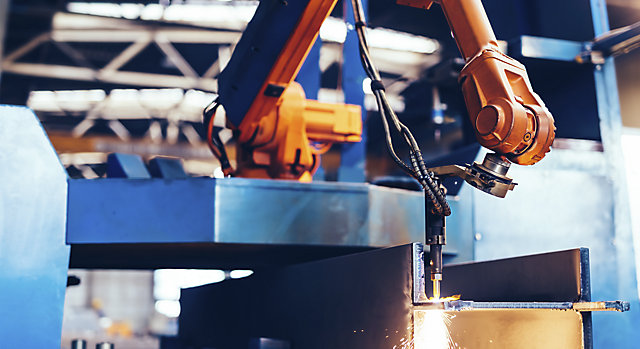
More business-related topics can be found on our information portal.
Contact us!
We are available to answer any further questions you might have.


